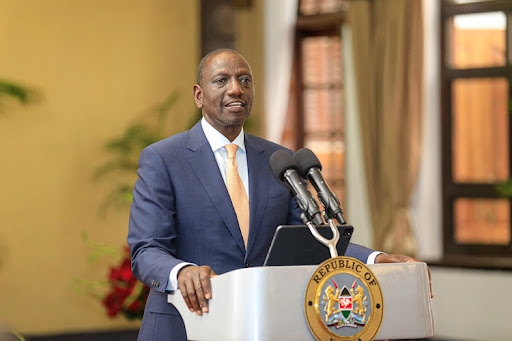In the wake of recurrent climate change shocks such as droughts and floods, there is a clarion call towards a radical shift from the business-as-usual scenario in developmental matters, and a serious rethink towards integration of environmental considerations as we put in place climate resilience electricity infrastructure projects.
The precariousness of the environment and socioeconomic impacts on animate and inanimate environments due to climate change are becoming increasingly evident.
The UN Climate Change Conference COP27, which took place in Egypt, presented such a rethink towards adaptation, coupled with a strong commitment from the international community to safeguard vulnerable communities hit by the impact of climate disasters.
As a follow-up to COP27, the inaugural Africa Union-backed Africa Climate Summit 2023 serves as a key platform to inform, frame and influence commitments, pledges and outcomes, leading to the development of a major declaration in Nairobi.
The summit is worthy to address the increasing exposure to climate change and its associated costs, both globally and particularly in Africa. With the expectation of escalating climate crises in terms of frequency and intensity, urgent action is needed to mitigate these challenges.
Climate change leaves diverse impacts on electricity transmission and even distribution infrastructure. Weather-related events such as ice, high winds, flooding and lightning are some of the causes of power disruptions globally.
Development projects such as electricity transmission systems are critical assets in the world today. On the mitigation spectrum, they play a significant role in offsetting the carbon loads in the atmosphere by providing clean power for use, diversifying reliance from thermal power generation, and conserving forests which are essential carbon sinks.
It is critical therefore to factor in the distinct levels of ensuring climate resilience in electricity infrastructure planning. This brings to the fore the urgent need for the integration of climate resilience financing into project costs.
Optimal level of service for strategic infrastructure and service sectors in Kenya such as ICT, banking, hospitality, health care, transport and education, among others, is dependent on an efficient and stable grid. Therefore, it is key to safeguard the integrity and optimal performance of transmission infrastructure within their operational lifespan.
Electricity transmission projects are indeed expensive public investments with an average operational life of 50-60 years if design thresholds remain constant. Their constituent hardware is designed to run and operate optimally under given climatic conditions. Changes to the design's climatic thresholds lead to potential transmission interruptions and reduced performance with significant economic footprints.
Kenya Electricity Transmission Company Limited is building the grid to among other objectives achieve the principle of N-1, which is based on redundancy. This is a key aspect of resilience which ensures alternative infrastructural paths are available in the system.
In selecting an optimal route for example, multifactorial approaches are employed to meet the technical, environmental, and socio-economic requirements of the transmission line. A hierarchy of measures is considered for areas that present a resilience – risk to the project including avoidance of the area, partial rerouting and engineering or nature-based solutions.
Globally, climate change poses a considerable threat to current and future electricity transmission infrastructure. Extreme temperatures, cyclones and floods can potentially negate progressive efforts made, leading to prolonged power outages, destruction of physical assets, destroyed livelihoods and even fatalities.
Kenya has not been left out of its share of such climate-instigated disruptions. Hitherto, the brunt is minimal in comparison to other areas in the world.
It is not all doom and gloom. Massive development projects such as electricity transmission projects offer us an opportunity to shift and adapt. Placing cabling underground, for instance, ensures adverse weather conditions that traditional transmission infrastructures are often exposed to above-ground are avoided. Underground cabling can alleviate requirement for further and additional frequent investment in transmission infrastructure maintenance and repairs.
This mode guarantees more secure energy supply with fewer instances of weather-related power outages, while also achieving cost savings eventually due to reduced maintenance and repairs.
Against this backdrop, we can argue that climate change and its impacts provide environmental and climate scientists, engineers, economists, and planners room to be proactive. There is an imperative call towards systematic adaptation to ensure resilience in transmission systems, thus sustaining their critical service.
By considering worst-case climate scenarios and modelling while planning new assets and reconfiguring the existing assets, the vulnerability of these assets can be buttressed ensuring heightened resiliency.
Considering this, Ketraco has made commendable and significant gains towards achieving transmission redundancy, optimal route selection and undertaking power demand studies which are key for resiliency.
Opportunities exist for harnessing, enhancing and integrating climate modelling for worst-case scenarios, policy realignments, capacity enhancement, strengthening of ESIA processes and integration of the gender nexus in planning. With this shift, and building of the present stock, we are destined leaders in infrastructural sustainability.
Green is the button and resilience the goal. Let us roll!
Registered consulting engineer and managing director, Kenya Electricity Transmission Company Ltd (Ketraco)

















